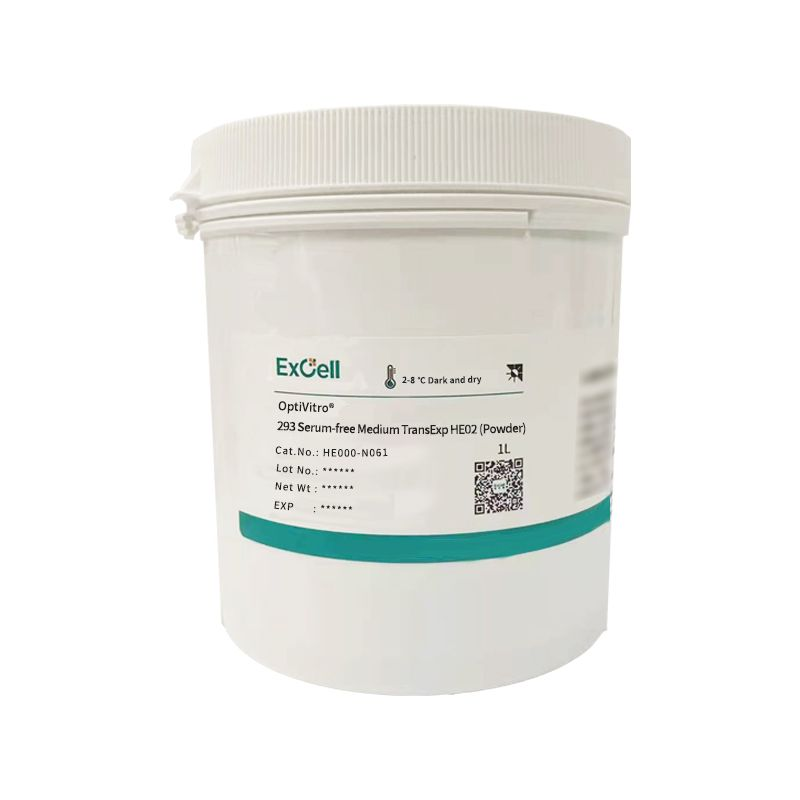Human Embryonic Kidney 293 (HEK293) cells are one of the most critical and widely used expression systems in modern biotechnology. Their rapid growth kinetics, amenability to large-scale culture, ease of transfection, and capacity to perform complex post-translational modifications make them indispensable for producing recombinant proteins and, most significantly, viral vectors (such as AAV and Lentivirus) for gene therapy.
However, translating the inherent potential of HEK293 cells into maximum commercial output—achieving high viable cell densities (VCD) and maximizing viral titer or protein yield—requires more than standard basal media. It demands specialized, chemically defined HEK293 media engineered to precisely meet the unique metabolic and nutritional needs of these highly active cells, especially when grown in suspension culture for industrial purposes.
Addressing the Unique Metabolic Challenges of High-Density Culture
HEK293 cells are notoriously high-demand metabolizers, often displaying a significant “Warburg effect,” characterized by a rapid, aerobic uptake of glucose followed by fermentation into lactate. This metabolic profile creates two major and interrelated challenges in large-scale culture: rapid nutrient depletion and the accumulation of toxic byproducts.
Specialized HEK293 media enhances cell viability and growth by tackling these issues head-on through precise formulation and metabolic steering:
- Glucose and Carbon Management: High-performance HEK293 media often employ metabolic strategies to minimize lactate production. This can involve optimizing glucose concentration or introducing alternative carbon sources, such as galactose or specialized amino acid blends. By steering the cell’s metabolism away from rapid glycolysis and toward the more efficient tricarboxylic acid (TCA) cycle, the media significantly reduces lactate accumulation. High lactate concentrations (typically >2 g/L) are highly toxic and dramatically suppress both cell growth and overall viability.
- Amino Acid Optimization and Balance: Compared to other expression hosts, HEK293 cells have specific limiting nutrient requirements. Media are formulated with elevated or carefully balanced levels of critical amino acids (e.g., L-glutamine, asparagine, serine) to sustain the high protein synthesis rates necessary for rapid growth and recombinant protein production. Crucially, the formulation manages L-glutamine to prevent excessive ammonia buildup, a primary inhibitor of cell growth and glycosylation.
- pH Stability via Buffer Systems: The high metabolic activity of HEK293 cells rapidly generates CO2 and acidic byproducts. The media must be robustly buffered—typically using high concentrations of sodium bicarbonate and carefully selected buffering agents—to maintain a stable physiological pH (optimally between 7.0 and 7.4) within the bioreactor. Maintaining this stable environment is fundamental to preserving cell membrane integrity, enzymatic function, and overall metabolic health, thereby directly supporting prolonged cell growth phases.
The Value of Chemical Definition in Maximizing Titers
The transition from undefined serum-containing media to chemically defined (CD) and protein-free (PF) formulations is the single biggest factor enabling the robust, high-density growth required for commercial viral vector and recombinant protein manufacturing.
Ensuring Consistency for Regulatory Compliance
Unlike traditional media, CD HEK293 media contains only known, quantified components. This eliminates the lot-to-lot variability associated with serum or hydrolysates, providing manufacturers with a predictable input material. This consistency is non-negotiable for large-scale production and regulatory filing, as predictable nutrient availability directly supports predictable growth kinetics and final product quality, reducing the risk of costly process failures.
Optimizing Transfection and Downstream Purity
For viral vector production, the HEK293 cell line must be efficiently transfected. Serum proteins are known to aggressively interfere with the transfection process by binding to the cationic lipid/DNA complexes.
By exclusively using protein-free HEK293 media:
- Transfection Efficiency Skyrockets: The absence of competing serum proteins ensures maximum efficiency in the formation and uptake of the plasmids required for viral production, leading to a higher percentage of producing cells and dramatically increased yields.
- Downstream Simplification: Eliminating thousands of grams of extraneous animal proteins significantly simplifies and reduces the cost of downstream purification of the viral vector or recombinant protein. This reduces the burden on chromatography systems, enhancing process recovery and lowering the overall cost of goods sold.
ExCell Bio’s Advanced HEK293 Media Platform
To meet the accelerating demand from the gene therapy and biopharma industries for high-quality upstream tools, suppliers like ExCell Bio offer specialized platforms that maximize the productivity of HEK293 cells across various applications. These media are designed to support the transition from adherent R&D processes to scalable suspension manufacturing.
OptiVitro® 293 Serum-free Basal Medium (293-LP) Specifications
The product line represented by the user’s reference to the 293-LP series, such as OptiVitro® 293 Serum-free Basal Medium CE03, is an advanced, chemically-defined platform tailored for the robust, high-density growth of HEK293 cells in suspension.
| Feature | Specification | Scientific and Commercial Advantage |
| Formulation | Animal-free, Protein-free, and Chemically-Defined (CD) | Guarantees safety, maximum lot-to-lot consistency, and simplifies regulatory documentation for clinical and commercial products. |
| Cell Types Supported | Suspension-adapted HEK293, HEK293T, and derived variants. | Broad applicability for highly demanding viral vector production (AAV, Lentivirus) and recombinant protein expression processes. |
| Application | High-level transient or stable expression, high-density HEK293 cell culture in suspension bioreactors, supporting intensified processes. | Maximizes cell viability and final product titer (viral vector or protein) under industrial conditions. |
| Formats | Liquid: 500 mL, 1000 mL; Powder: 1 L, 10 L, 100 L. | Provides versatile and scalable options from small-scale process optimization up to large-scale manufacturing runs, simplifying procurement. |
By optimizing nutrient delivery, managing toxic metabolites, and providing an ideal environment for shear protection and transfection efficiency, advanced HEK293 media platforms from companies like ExCell Bio are instrumental in translating the genetic potential of the HEK293 cell line into predictable, high-yield commercial success. The use of these specialized, defined media is the necessary control lever to ensure that HEK293 cell culture processes are robust, scalable, and compliant with the highest standards of the biopharmaceutical industry.


